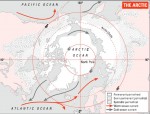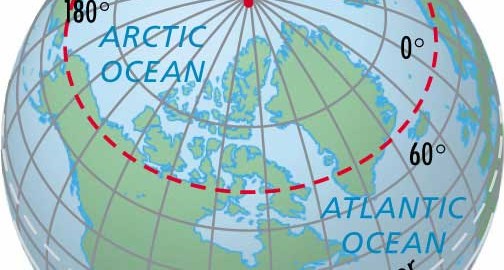Weather: Antarctica/Arctic
The unrelenting cold of the glacial continent of Antarctica boggles the mind. Much of the ice-covered Arctic Ocean melts or breaks up each summer. By contrast, all but roughly two percent of the Antarctic landmass is sealed year-round beneath a mass of ice up to 4.8km/3 miles deep. There's so much ice that, were it […]

The Arctic
At the other end of the world, things are very different. The Antarctic continent is surrounded by the Southern Ocean, the worlds wildest ocean, which roars round the Earth untrammelled by land. But while the Antarctic is land surrounded by water, the Arctic is water surrounded by land. The pole itself is merely a spot […]

Processes and Landforms of Arctic and Alpine Tundra
The treeless arctic and alpine tundra environment is severely cold in winter. In the tundra, soil water is solidly frozen for many months. During the short summer season, however, the surface thaws, leaving the soil saturated and vulnerable to mass wasting and water erosion. With the return of cold temperatures, the freezing of soil water exerts a strong mechanical influence on the […]
Arctic
With regularity, studies of the Arctic begin with comments about the difficulties of defining the region. Its name is derived from the Greek word, Arktos (meaning bear), for the constellation around the Pole Star. In its earlier meaning, the Arctic Circle defined that part of the sky, but it now refers to a line of latitude (currently 661330 N) north […]

Arctic National Wildlife Refuge
LOCATED IN northeastern ALASKA and managed by the U.S. Fish and Wildlife Service, the Arctic National Wildlife Refuge (ANWR) encompasses the largest diversity of wildlife of any protected area in the circumpolar north, earning it the nickname “the American Serengeti.” Efforts to preserve the refuge began in 1960 with the establishment of the Arctic National Wildlife […]

Arctic Circle
LOCATED AT 66.5 degrees north latitude or 23.5 degrees southward of the North Pole, the Arctic Circle forms an imaginary line marking the northernmost location where the sun can be seen during the northern hemisphere's winter solstice (December 21). On June 22 and again on December 21, the circle of illumination (formed by the sun's […]